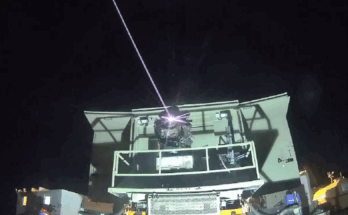
The U.S. Marine Corps has issued a Request for Information for a counter-unmanned aircraft system (C-UAS). The RFI states that the service may procure from six to 10 systems.
The system must include an air surveillance system capable of detecting and classifying unmanned aircraft and utilizing electronic warfare and a direction-finding system to provide positive identification of a UAS/UAV. An electro-optical and infrared camera or similar technology must also be included for use by a C-UAS operator in visually identifying a target.
The system should be able to intercept the UAS/UAV through the operator Ground Control Intercept (GCI) in order to come close enough in proximity of the targeted UAS/UAV to employ countermeasures. The system will employ countermeasures such as the ability to jam the radio link between the UAS and its operator. There are a wide variety of other intercept options as well, such as firing a net, using a laser or other directed energy technology to disable or destroy the UAS, or using a projectile. The system will be controlled by a single operator.
The demand for C-UASs is being driven by the proliferation of unmanned aircraft systems by both state and non-state actors, including low-end off-the-shelf systems that can be modified into attack drones by insurgents. There are a number of ways to utilize C-UAS technology. For example, the systems could be deployed in the field to protect soldiers on the move, or installed around military bases or other stationary targets. The Marines want information on whether systems are ground-based stationary, mobile, or vehicle-mounted.
Responses are due by June 26.
Shaun's deep-rooted interest in military equipment continues in his role as a senior defense analyst with a focus on the United States. He played an integral role in the development of Forecast International's U.S. Defense Budget Forecast, an interactive online product that tracks Pentagon acquisition programs throughout the congressional budget process. As editor of International Military Markets – North America, Shaun has cultivated a deep understanding of the vast defense markets in the United States and Canada. He is a regular contributor to Forecast International's Defense & Security Monitor blog and has co-authored white papers on global defense spending and various military programs.




